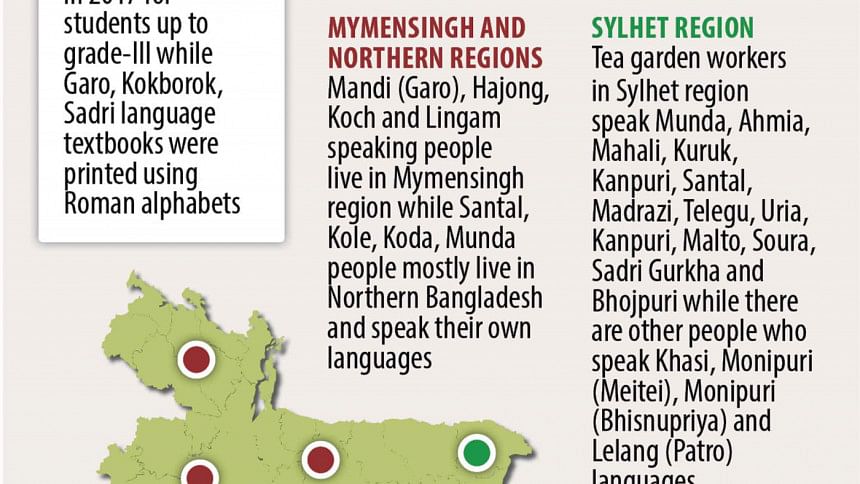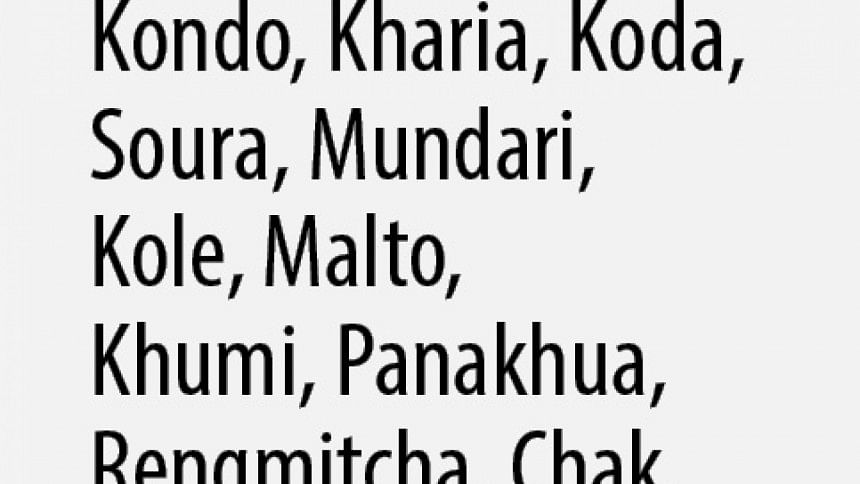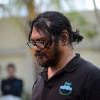Dying in silence

The 14 languages declared endangered over two years ago remain in various stages of decline as the number of users diminish, with experts calling for extensive measures from the government to preserve these.
The state of some of these languages is so dire that only 10 to 12 elderly people in certain ethnic communities speak them.
According to Unesco, "A language disappears when its speakers disappear or when they shift to speaking another language -- most often, a larger language used by a more powerful group."
It also says, "Languages are threatened by external forces such as military, economic, religious, cultural or educational subjugation, or by internal forces such as a community's negative attitude towards its own language."
A linguistic survey conducted by the International Mother Language Institute (IMLI), which ended in 2018, listed the 14 endangered languages -- Kondo, Kharia, Koda, Soura, Mundari, Kole, Malto, Khumi, Pangkhua, Rengmitcha, Chak, Khyang, Lusai, and Laleng (Patro).
They are mostly spoken in the north, Sylhet region, and the Chattogram Hill Tracts and among 41 ethnic languages spoken as mother tongues in the country.
Their preservation becomes even more difficult as there is no written form or alphabets of these languages. In the meantime, the number of speakers continue to decline and are no longer learnt or used by the next generation.
Experts said these endangered languages will soon be lost forever along with their linked culture and traditional knowledge, if proper measures are not taken.
Mashrur Imtiaz, assistant professor of linguistics at the University of Dhaka, said the population size of the communities who speak the 14 languages range from 1,000 to 40,000.
"In the case of Mundari, the total population is around 40,000 but from the linguistic aspect, the number of speakers is significantly less in reality," he said.
Currently, he added, less than 15 people talk fluently in the Kharia language.
Experts say when less than 5,000 people speak a language, that is an endangered language.
"People from the community will have to step forward if they want to save their language. Then, the government can help in the process," said Dr Mohammad Iltemas, deputy director of IMLI's publications and research planning wing.
Under the linguistic survey project of IMLI, Dr Mohammad Iltemas said researchers collected 300 words of each language and the Bangla and English meaning of these words. The researchers also worked on how to form sentences in these languages and anthropogenic origins of each language.
The research work will be published in Bangla and English and will be inaugurated by the Prime Minister, he said.
The date of this publication's launch has been up in the air for more than two years since the research was completed.
On the occasion of Bangabandhu Sheikh Mujibur Rahman's birth centenary, IMLI has translated and published his March 7 speech in five ethnic languages including Chakma, Marma, Garo, Sadri, and Kokborok, said Dr Iltemas.
The institute is also making a documentary on 10 ethnic communities introducing their language and culture, an IMLI official said.
However, Sourav Sikder, professor of the linguistic department at DU, believes only documentation is not enough to save endangered languages.
"Only documentation of a language won't save it. We need to make arrangements so that the communities get opportunities to practise their languages and they can read, write and speak their mother tongues."
He further said, "We need to ensure they get at least primary-level education in their own languages. But currently the government does not have any such initiative for these 14 languages."
In 2017, the government started publishing books starting from pre-primary to class three in five different languages including Chakma, Marma, Kokborok, Garo, and Sadri.
The Chakma and Marma books are in their own script while the other three are in the Roman script. The Santal language was included in this project but later excluded as the community could not reach a consensus on which alphabet should be used in the book.
This project has so far seen mixed success with experts pointing to a lack of training for teachers to supplement the new books.
"Primary education in the mother tongue project was not very successful for different reasons," said Sourav Sikder.
He suggested the government form a language commission that would take effective measures to save endangered languages.
"The government should take measures to ensure all citizens of the country get the opportunity to learn and practise their mother tongues," he said, referring to the country's glorious history of fighting for the mother tongue.
LANGUAGE DIVERSITY
In 2019, the government enlisted 50 ethnic communities in the gazette of "Small Ethnic Groups Cultural Institutes Act of 2010".
Aside from Bangla and Urdu, these small ethnic communities speak 39 languages as their mother tongue, IMLI's linguistic survey found.
These languages are Bawm, Chak, Chakma, Mandi (Garo), Hajong, Kole, Khasi, Kharia, Koch, Munda, Khyang, Khumi, Marma, Monipuri (Meitei), Monipuri (Bhisnupriya), Lusai, Mro, Ahmia, Kanpuri, Mahali, Kurukh, Malto, Kondo, Thar, Laleng (Patro), Pangkhua, Rakhaine, Santal, Soura, Madrazi, Telugu, Tangchangya, Kokborok, Nepali (Gurkha), Rengmitcha, Koda, Lingum, Uria, and Sadri.
Out of the 41 languages spoken in Bangladesh, only eight languages -- including Bangla, Chakma, Marma, Tangchangya, Rakhaine, Mro, Monipuri and Ahmia -- have their own alphabets, the linguistic survey found.
Though some other languages like Kokborok, Mandi, and Bwam do not also have their own alphabets, they use the Roman or Bangla script.
Subhashish Sinha, popular theatre director and a writer from a Monipuri (Bhisnupriya) community in Moulvibazar, said their alphabet has been lost.
"We now write Monipuri using the Bangla alphabet," he said.
Bawm, Chak, Chakma, Marma, Khumi, Mro, Rengmitcha, Pangkhua, Khyang, Lusai, Tangchangya, Kokborok, and Nepali (Gurkha) speakers mostly live in the Chattogram Hill Tracts (CHT) and Cox's Bazar area in limited numbers.
Only a few Nepali speakers live in Bandarban, believed to have come to CHT with British soldiers during the colonial era, as well as in the tea gardens in Sylhet.
Younguang Mro, a Mro writer, said a portion of the Mro community living in Krangsi Para ofAlikadam upazila in Bandarban speak Rengmitcha.
"Now, only a few people still talk in the Rengmitcha language. Though they are [also] Mro people, we cannot understand their language. It is a different language," said Younguang.
Tea garden workers in Sylhet speak multiple languages including Munda, Ahmia, Mahali, Kuruk, Kanpuri, Santal, Madrazi, Telugu, Uria, Kanpuri, Malto, Soura, Sadri, Gurkha, and Bhojpuri.

Other languages spoken in Sylhet are Khasi, Monipuri (Meitei), Monipuri (Bhisnupriya), and Laleng (Patro).
Mandi (Garo) and Hajong languages are spoken mainly in the greater Mymensingh region. Some Koch and Lingum speakers also live in this region.
Santal, Kole, Koda, and Munda people mostly live in northern Bangladesh and in the Sylhet area in limited numbers. Some of the Munda community live near the Sundarbans while river gypsies or the Bedia people speak Thar.
Rakhaine speakers live in Cox's Bazar and in Barguna, Barishal.
As per the "Atlas of the World's Languages in Danger" published by Unesco in 2010, there is a list of 2,500 endangered languages. Researchers predict the number will reach 3,000 by the end of this century.

 For all latest news, follow The Daily Star's Google News channel.
For all latest news, follow The Daily Star's Google News channel. 



Comments